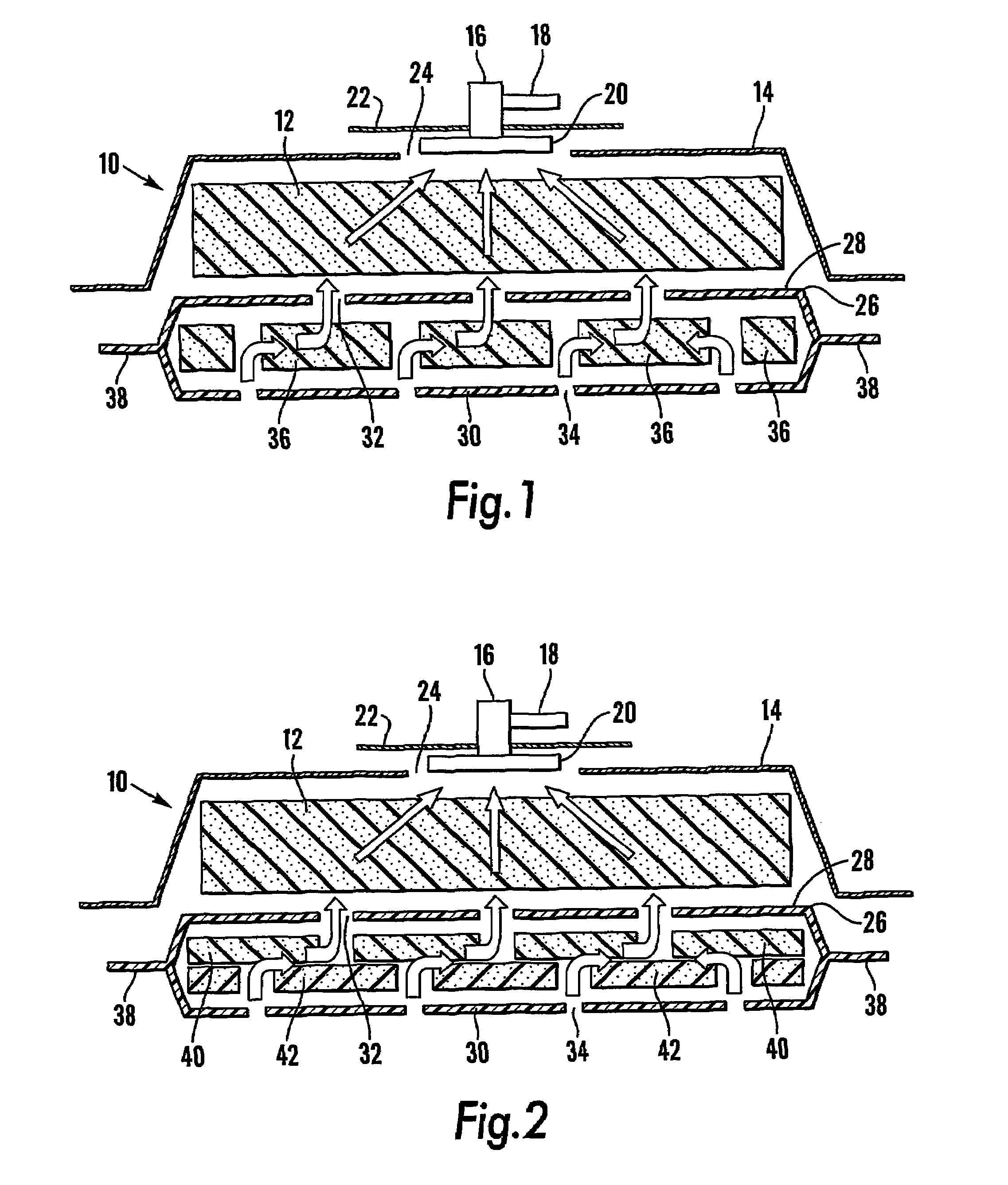Removable wound closure
- Summary
- Abstract
- Description
- Claims
- Application Information
AI Technical Summary
Benefits of technology
Problems solved by technology
Method used
Image
Examples
Embodiment Construction
[0028]The present invention lends itself to use in conjunction with surgical techniques that require repeated access to the abdominal cavity after surgery therein. The present invention is directed toward providing a removable and beneficial dressing that facilitates both healing of the wound and its final closure.
[0029]Reference is made to U.S. patent application Ser. No. 08 / 951,832 and also to U.S. Ser. No. 09 / 078,223 and GB Patent No. 2307180 (WO 94 / 20041 and WO 97 / 18007), for a description of a negative pressure system suitable for implementing the vacuum required for use of the dressing structures, and treatment method, described herein. The disclosure of these documents is incorporated herein by reference. Negative pressure is defined herein as a vacuum of less than 1 atmosphere of pressure. Controlling the negative pressure and collecting and disposing of exuded fluids are also described in the above cited references. The manner of using such systems in conjunction with the d...
PUM
 Login to View More
Login to View More Abstract
Description
Claims
Application Information
 Login to View More
Login to View More - R&D
- Intellectual Property
- Life Sciences
- Materials
- Tech Scout
- Unparalleled Data Quality
- Higher Quality Content
- 60% Fewer Hallucinations
Browse by: Latest US Patents, China's latest patents, Technical Efficacy Thesaurus, Application Domain, Technology Topic, Popular Technical Reports.
© 2025 PatSnap. All rights reserved.Legal|Privacy policy|Modern Slavery Act Transparency Statement|Sitemap|About US| Contact US: help@patsnap.com



